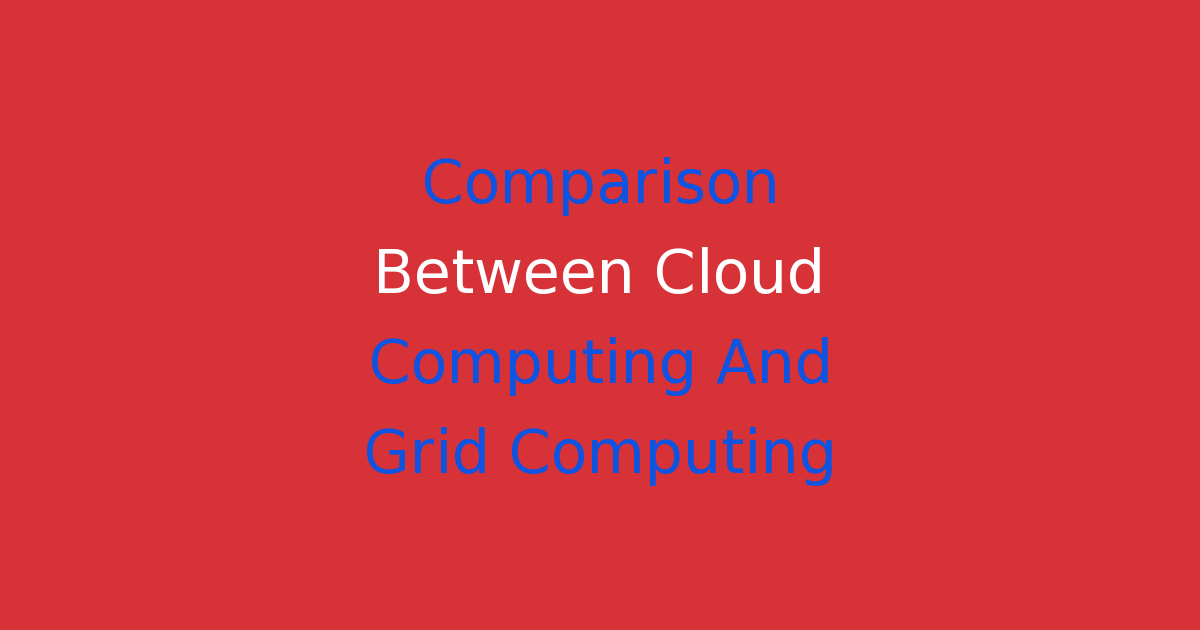Cloud computing and grid computing have distinct differences in terms of scalability and resource availability.
Comparison between Cloud Computing and Grid Computing
Introduction
In recent years, there has been a rapid advancement in technology that has led to the emergence of new computing paradigms such as cloud computing and grid computing. These technologies have revolutionized the way we store, process, and access data. In this report, we will compare and contrast cloud computing and grid computing, highlighting their key differences and similarities.
Problem Statement
With the exponential growth of data and the increasing demand for computational resources, traditional computing models are proving to be inadequate. This has led to the need for more scalable and flexible computing solutions. Cloud computing and grid computing are two such solutions that have gained popularity in recent years. However, it is essential to understand the differences between the two and assess their suitability for various applications.
Existing System: Grid Computing
Grid computing is a distributed computing paradigm that allows organizations to pool resources and share them across a network. In grid computing, multiple computers work together to perform complex tasks that would be impossible for a single machine to handle. Grid computing is highly scalable and offers high performance by utilizing the collective power of multiple machines.
One of the key advantages of grid computing is its ability to handle large-scale scientific and research applications. Grid computing is ideal for data-intensive tasks that require massive computational resources. However, grid computing can be complex to set up and maintain, requiring specialized knowledge and expertise.
Disadvantages of Grid Computing
Despite its advantages, grid computing has several drawbacks. One of the main disadvantages of grid computing is its high setup and maintenance costs. Setting up a grid computing environment requires significant resources, both in terms of hardware and software. Additionally, grid computing can be challenging to manage, as it requires specialized skills and expertise.
Another disadvantage of grid computing is its lack of flexibility. Grid computing environments are often static and inflexible, making it difficult to adapt to changing requirements. This can be a significant limitation for organizations that require dynamic computing resources.
Proposed System: Cloud Computing
Cloud computing is a more recent computing paradigm that leverages the internet to deliver on-demand computing resources. In cloud computing, resources are delivered over the internet and can be scaled up or down based on demand. Cloud computing offers greater flexibility and scalability compared to grid computing, making it an attractive option for organizations of all sizes.
One of the key advantages of cloud computing is its cost-effectiveness. Cloud computing eliminates the need for organizations to invest in expensive hardware and software infrastructure, as resources are delivered over the internet on a pay-as-you-go basis. This can result in significant cost savings for organizations.
Advantages of Cloud Computing
Cloud computing offers several advantages over grid computing. One of the main advantages of cloud computing is its scalability. Cloud computing allows organizations to scale up or down based on demand, ensuring that they have access to the resources they need when they need them. This can help organizations to respond quickly to changing business requirements.
Another advantage of cloud computing is its flexibility. Cloud computing allows organizations to quickly deploy and configure resources, enabling them to adapt to changing requirements. This can be a significant advantage for organizations that need to rapidly scale their computing resources.
Features of Cloud Computing
Cloud computing offers several key features that make it an attractive option for organizations. One of the main features of cloud computing is its virtualization capabilities. Cloud computing allows organizations to virtualize their computing resources, making it easier to manage and scale their infrastructure.
Another key feature of cloud computing is its self-service capabilities. Cloud computing allows organizations to easily provision and manage resources through a self-service portal, reducing the need for manual intervention. This can help organizations to streamline their operations and improve efficiency.
Conclusion
In conclusion, cloud computing and grid computing are two distinct computing paradigms that offer different advantages and disadvantages. While grid computing is ideal for large-scale scientific and research applications, cloud computing is better suited for organizations that require flexibility and scalability. By understanding the differences between the two paradigms, organizations can choose the computing solution that best fits their needs.

